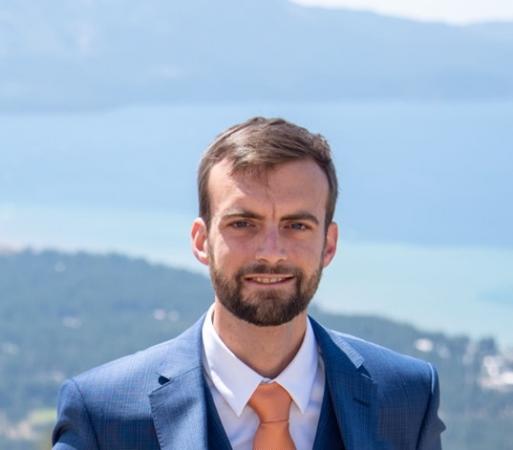
Alex Zylstra
Alex Zylstra (for the NIF team)
Lawrence Livermore National Laboratory
Friday, May 5, 2023
3:00pm
Abstract: Thermonuclear fusion in the laboratory is a scientific grand challenge, a highly compelling problem because the fusion reactions can self-heat the fuel and continue the burn. Predominantly approaches use the fusion of deuterium and tritium nuclei, which generates 17.6 MeV of energy released in a neutron and alpha particle. The alpha particle, which carries 1/5 of the energy, can heat the plasma. A plasma in which the alpha self-heating is greater than external heating is termed a ‘burning plasma’, and one in which the self-heating dominates over all loss mechanisms, leading to a run-away increase in temperature, is termed ‘ignited’. Inertial confinement fusion (ICF) has pursued these scientific milestones using large laser drivers, notably the National Ignition Facility (NIF) at LLNL. Here we use the laser energy, up to 2.05 MJ, to generate a hot x ray bath, which creates ablation pressures of hundreds of Mbar at the outer surface of a fuel-containing capsule. The ablation pressure implodes the capsule, with fuel pressures of several hundred GBar generated as the fuel stagnates at the center to initiate fusion burn. In recent years several improvements in the scientific design and requisite technologies have enabled increasing performance of NIF experiments through the burning plasma and ignition regimes, which are prerequisites for high gain in inertial fusion, to the first experiment with target gain exceeding unity. *Work performed under the auspices of the U. S. Department of Energy by LLNL under contract DE-AC52-07NA27344. LLNL-ABS-845054
Bio: Dr. Alex Zylstra was the experimental lead for the ‘Hybrid E’ campaign within the inertial confinement fusion program on NIF. This campaign improved implosion performance from previous records, first surpassing the
burning-plasma threshold, Lawson’s criterion for ignition, and most recently the first laboratory experiment to produce target gain exceeding unity with a fusion yield over 3 MJ. He also works on projects related to nuclear astrophysics. Alex started working in inertial fusion as a graduate student at MIT, where he was supported by the Stewardship Science Graduate Fellowship in his work on OMEGA and NIF. After graduating in 2015 he went to Los Alamos National Laboratory as a Reines Distinguished Postdoctoral fellow. In 2018 he both took a position with Lawrence Livermore as the experimental lead for the Hybrid E campaign on NIF and was awarded a DOE Early Career grant for his work on nuclear astrophysics.